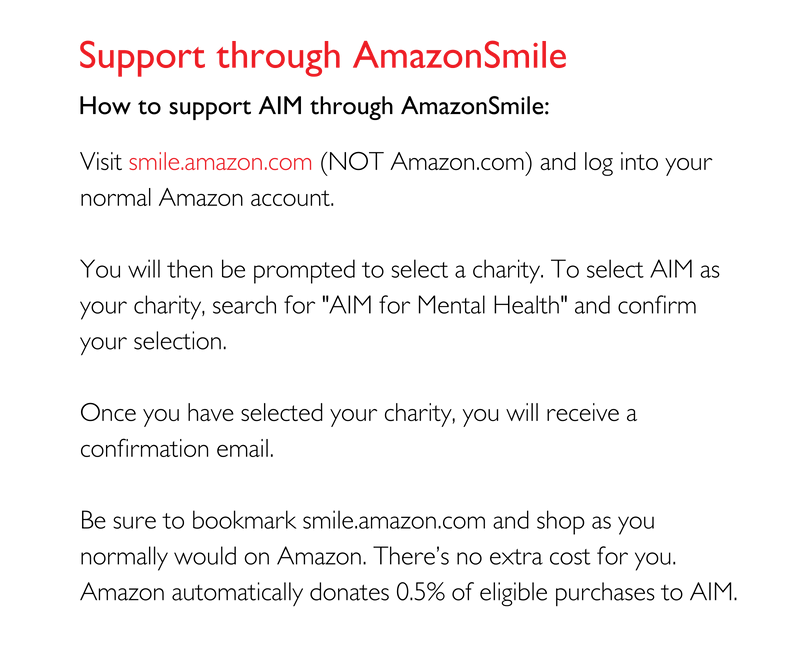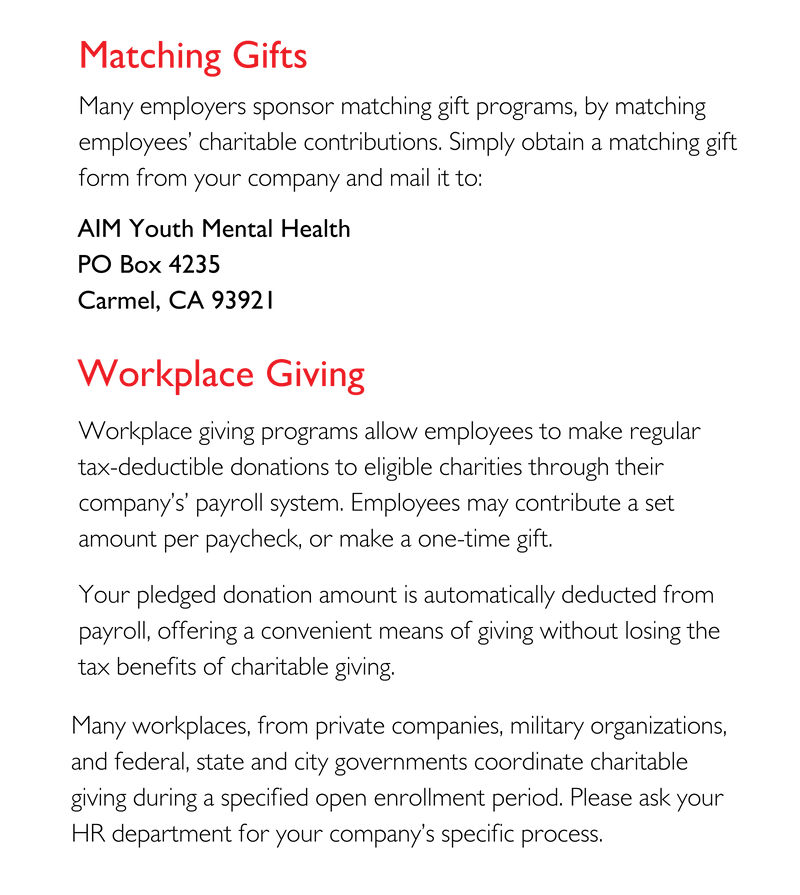
Susan Y. Bookheimer, Ph.D.
View Bio >
AIM disburses $180,000 to UCLA’s Center for Cognitive Neuroscience – Semel Institute
In 2015, AIM disbursed $180,000 to UCLA’s Center for Cognitive Neuroscience, which studies the brain and neuropsychiatric disorders in children and adults using advanced brain imaging, specifically functional and structural MRI. AIM funds have supported several new projects and provided seed money for future federal grants. MRI-based research, directly fueled by AIM, includes studies into understanding the sensory hypersensitivity of children with anxiety and autism to better inform treatment, a pilot program to examine the unique brain chemistry of patients with schizophrenia which may lead to new pharmacological approaches, and a study to measure the effectiveness of cognitive training in methamphetamine abusers. The UCLA Center, dedicated to identifying risks for mental illness and new preventative treatments, also used AIM funds for a study of adolescents at high risk for developing psychosis, to identify early changes in social responsiveness. These results will be submitted to the NIH for a larger grant. Lastly, the AIM grant funded a pilot project to better understand how the brains of those vulnerable to depression respond to cognitive behavioral therapy and how this treatment normalizes the brain’s response.
Dr. Bookheimer wrote: “One of the important research studies that was funded by AIM examined the neural basis of Sensory Over-responsivity in autism. SOR is a difficult and sometimes debilitating feature of ASD. This work- done by Dr. Shula Green, a former post-doc, Dr. Mirella Dapretto and myself, examined how the brains of children with SOR and autism responded to sensory stimulation and how the brains of these children adapt or “habituate” over time. We made an important discovery- the brains in children with autism and ASD react differently to repeated exposure. Most of us rapidly habituate to sensory input, so that even unpleasant sensations do not bother us after a while. This fact is used in exposure therapy for many individuals with anxiety disorders, which can appear very similar to SOR in children with ASD but are in fact different. Our work has shown that traditional therapies will not work inn these children because the habituation process is disrupted; although the brains of children with SOR responded initially the same way as control children and children with autism who did not have SOR, there was a big difference: the sensation areas of the brain did not habituate over time like the others. Instead, the brain continued to respond to sensations as if they were brand new, and aversive. Our findings suggested that treatment for these children must require a fundamentally different, “top-down” approach. Dr. Green sends this first-hand experience of working with one of these children and the impact the work had on this child:
“I worked with an 8 year-old boy who was one of the sweetest and smartest kids I’d ever met. He had ASD but was so smart and functioning so well academically that his school refused to give him any services. However he was quite anxious – so much so that he resisted going to school every morning (i.e. this very even-tempered kid having complete meltdowns) and while he did well in class, he did not have any friends and was very uncomfortable playing with any other kids during P.E. or recess. He also had significant auditory sensory over-responsivity. I have a hunch this is part of what made recess difficult (i.e. the other kids making so much noise). He also had difficulty going places with his family, such as restaurants, theme parks, etc. He adored his family and wanted so badly to spend time with them – I remember him feeling particularly badly because the family had to leave a restaurant during his mother’s birthday dinner due to his auditory sensitivity. I saw him in a community mental health center and he lucked out a bit because I happened to have training in CBT for anxiety in kids with ASD – so we worked on a lot of coping skills to deal with his anxiety and SOR. For example, he had difficulty talking about his emotions but as soon as we started drawing scenarios, he could write out thoughts and feelings in dialogue “bubbles.” We also worked with an occupational therapist on coping strategies for his SOR – a lot of these were similar to coping strategies for anxiety, e.g., recognizing his physical response and finding coping mechanisms such as deep breathing, verbalizing his feelings, taking a break in a quiet space, etc.
Our current research suggests that this is exactly the right way to approach treatment for this kind of kid – first of all, I don’t know that I would have recognized his SOR if I hadn’t known from our research that anxiety and SOR are so highly related. Secondly, our research suggests that top-down coping strategies may be most effective for treating SOR (as opposed to exposure). The kind of treatment this child got is VERY rare and I think our research will lead to better treatment strategies as well as wider awareness of the effectiveness of this type of treatment.”
Thanks to AIM, we now know how to treat this very serious symptom of autism.”



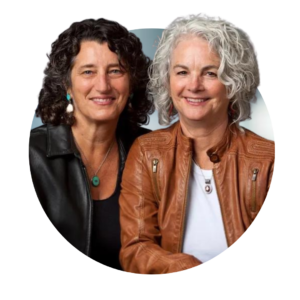
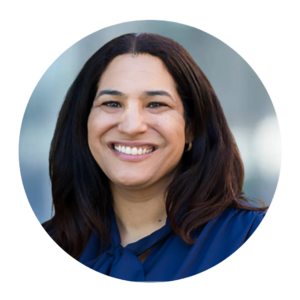



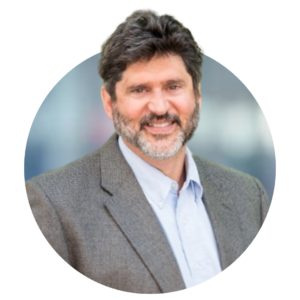


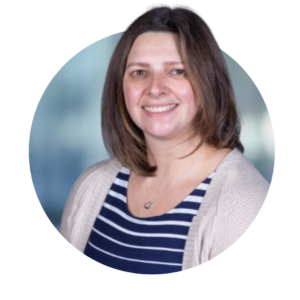
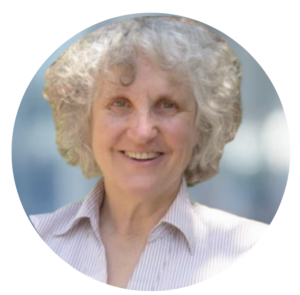
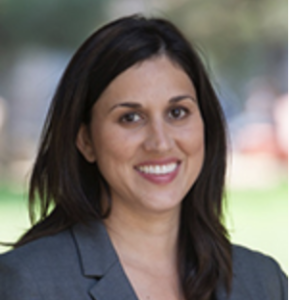


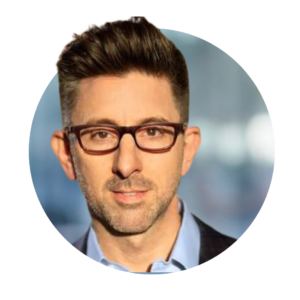

 Moving Upstream: A Proactive Approach to Addressing Behaviors and Bullying
Moving Upstream: A Proactive Approach to Addressing Behaviors and Bullying Krista Reuther is the Assistant Director of Ohana’s Community Health and Prevention Program. She received her Masters in Public Health and Social Work at UC Berkeley. She comes to this position after 14 years of clinical social work experience at Stanford Children’s Hospital in pediatric oncology, critical care, and bereavement. Her goal is to reduce the incidence of mental illness in children and adolescents in Monterey County.
Krista Reuther is the Assistant Director of Ohana’s Community Health and Prevention Program. She received her Masters in Public Health and Social Work at UC Berkeley. She comes to this position after 14 years of clinical social work experience at Stanford Children’s Hospital in pediatric oncology, critical care, and bereavement. Her goal is to reduce the incidence of mental illness in children and adolescents in Monterey County. Dr. Guss is a 35-year veteran educator with a doctorate degree in Educational Leadership. She served as a classroom teacher for 10 years, including two years as a teacher in a bilingual program in South Central Los Angeles. She has also served as a college professor, mentor teacher for new teachers, and a master teacher for teacher candidates completing their student teaching experience. She continues to be a strong advocate for the teaching profession.
Dr. Guss is a 35-year veteran educator with a doctorate degree in Educational Leadership. She served as a classroom teacher for 10 years, including two years as a teacher in a bilingual program in South Central Los Angeles. She has also served as a college professor, mentor teacher for new teachers, and a master teacher for teacher candidates completing their student teaching experience. She continues to be a strong advocate for the teaching profession.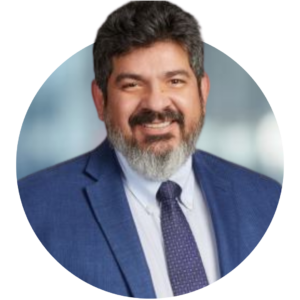 Fellowship: Stanford University School of Medicine (1994) CA
Fellowship: Stanford University School of Medicine (1994) CA Michael G. Thompson, Ph.D. is a consultant, author and psychologist specializing in children and families. He is the supervising psychologist for the Belmont Hill School and has worked in more than seven hundred schools across the United States, as well as in international schools in Central America, Europe, Africa and Asia.
Michael G. Thompson, Ph.D. is a consultant, author and psychologist specializing in children and families. He is the supervising psychologist for the Belmont Hill School and has worked in more than seven hundred schools across the United States, as well as in international schools in Central America, Europe, Africa and Asia.
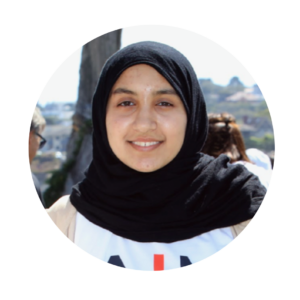 is 15 years old and a sophomore at Marina High School in Marina, CA. Her academic interests include math, history, and psychology. She joined the AIM Ideas Lab in 2021 because she wanted to be a part of something that could have a great impact on her community. Marwa is interested in youth mental health because she has always been fascinated with the human mind and she wants to support those that are suffering who may feel like their challenges in life aren’t important enough or are too afraid to seek necessary help.
is 15 years old and a sophomore at Marina High School in Marina, CA. Her academic interests include math, history, and psychology. She joined the AIM Ideas Lab in 2021 because she wanted to be a part of something that could have a great impact on her community. Marwa is interested in youth mental health because she has always been fascinated with the human mind and she wants to support those that are suffering who may feel like their challenges in life aren’t important enough or are too afraid to seek necessary help.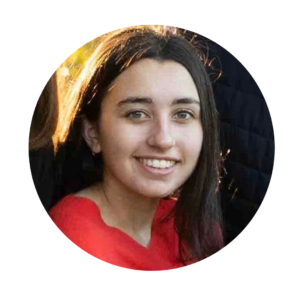 Giovanna Panetta is a 16 year old junior at Carmel High School. She has always been called to STEM subjects, specifically biology. The AIM Ideas Lab instantly attracted her attention as a research opportunity. Gia has always comprehended the importance of mental health. She knows that COVID only exacerbated previously existing problems, and that as a community we can try and find the root of those problems. Mental health is an integral part of life, and can impede a body’s ability to be healthy. She strongly believes that life is worth living, and she wants to help anyone that thinks otherwise.
Giovanna Panetta is a 16 year old junior at Carmel High School. She has always been called to STEM subjects, specifically biology. The AIM Ideas Lab instantly attracted her attention as a research opportunity. Gia has always comprehended the importance of mental health. She knows that COVID only exacerbated previously existing problems, and that as a community we can try and find the root of those problems. Mental health is an integral part of life, and can impede a body’s ability to be healthy. She strongly believes that life is worth living, and she wants to help anyone that thinks otherwise. Dr. Friedman completed her undergraduate degree in Psychology from University of California San Diego (UCSD). She went on to complete her masters and doctorate degrees (Ph.D.) in Clinical Psychology from Rosalind Franklin University of Medicine and Science/Chicago Medical School. Dr. Friedman completed her pre-doctoral internship at Rush University Medical Center, Chicago, IL, and her post-doctoral fellowship training at the VA San Diego Healthcare System. Her clinical training and experience has been focused primarily on comprehensive assessment and effective treatments for anxiety, mood and related disorders. Dr. Friedman has extensive experience in providing Cognitive Behavioral Therapies for anxiety disorders (e.g. worry, OCD, social anxiety, phobias and PTSD), depression, adjustment disorders/life stress, insomnia and body-focused repetitive behaviors (e.g. Trichotillomania and skin picking). She has received training in evidence-based interventions for a variety of specific problems, including exposure with response prevention (ERP) for treatment of OCD, Prolonged Exposure (PE) for treatment of PTSD, and Cognitive Behavioral Therapy for Insomnia (CBT-I). Moreover, she has specialty training in the treatment of childhood anxiety and related disorders, such as ADHD, selective mutism, separation anxiety, PTSD, depression and specific phobias. In addition, Dr. Friedman has developed an expertise in research on Trichotillomania and body-focused repetitive behaviors, which has led to numerous local and national presentations. Dr. Friedman regularly attends local and national conferences, training seminars and workshops in order to stay informed on the most up to date treatments and apply state of the art science into her clinical practice.
Dr. Friedman completed her undergraduate degree in Psychology from University of California San Diego (UCSD). She went on to complete her masters and doctorate degrees (Ph.D.) in Clinical Psychology from Rosalind Franklin University of Medicine and Science/Chicago Medical School. Dr. Friedman completed her pre-doctoral internship at Rush University Medical Center, Chicago, IL, and her post-doctoral fellowship training at the VA San Diego Healthcare System. Her clinical training and experience has been focused primarily on comprehensive assessment and effective treatments for anxiety, mood and related disorders. Dr. Friedman has extensive experience in providing Cognitive Behavioral Therapies for anxiety disorders (e.g. worry, OCD, social anxiety, phobias and PTSD), depression, adjustment disorders/life stress, insomnia and body-focused repetitive behaviors (e.g. Trichotillomania and skin picking). She has received training in evidence-based interventions for a variety of specific problems, including exposure with response prevention (ERP) for treatment of OCD, Prolonged Exposure (PE) for treatment of PTSD, and Cognitive Behavioral Therapy for Insomnia (CBT-I). Moreover, she has specialty training in the treatment of childhood anxiety and related disorders, such as ADHD, selective mutism, separation anxiety, PTSD, depression and specific phobias. In addition, Dr. Friedman has developed an expertise in research on Trichotillomania and body-focused repetitive behaviors, which has led to numerous local and national presentations. Dr. Friedman regularly attends local and national conferences, training seminars and workshops in order to stay informed on the most up to date treatments and apply state of the art science into her clinical practice. Dr. Piacentini is a board-certified clinical child and adolescent psychologist and Professor in the UCLA Department of Psychiatry and Biobehavioral Sciences. He directs the UCLA Child OCD, Anxiety, and Tic Disorders Clinic and Tourette Association Center of Excellence which provide diagnostic evaluation and treatment (both therapy and medication) for youth with the above problems. He also directs the UCLA Center for Child Anxiety Resilence, Education, and Support (CARES; carescenter.ucla.edu) which provides education and programming to parents, teachers, and clinicians about anxiety prevention and management.
Dr. Piacentini is a board-certified clinical child and adolescent psychologist and Professor in the UCLA Department of Psychiatry and Biobehavioral Sciences. He directs the UCLA Child OCD, Anxiety, and Tic Disorders Clinic and Tourette Association Center of Excellence which provide diagnostic evaluation and treatment (both therapy and medication) for youth with the above problems. He also directs the UCLA Center for Child Anxiety Resilence, Education, and Support (CARES; carescenter.ucla.edu) which provides education and programming to parents, teachers, and clinicians about anxiety prevention and management.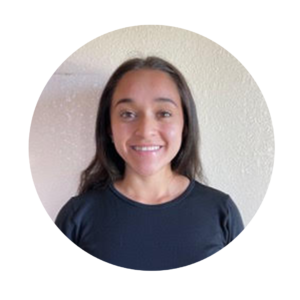 Citlalli Nava is 18 years old and a first year majoring in Psychology at Hartnell Community College in Salinas, CA. She is passionate about understanding how mental health affects how youth think, act, and feel. Citlalli joined the AIM Ideas Lab in 2021 after witnessing the increase in mental health challenges in teenagers and considering the mental health issues they are facing. Citlalli is interested in youth mental health because it is a real problem faced by her generation.
Citlalli Nava is 18 years old and a first year majoring in Psychology at Hartnell Community College in Salinas, CA. She is passionate about understanding how mental health affects how youth think, act, and feel. Citlalli joined the AIM Ideas Lab in 2021 after witnessing the increase in mental health challenges in teenagers and considering the mental health issues they are facing. Citlalli is interested in youth mental health because it is a real problem faced by her generation. Clinical and community psychologist and health care innovator Arthur C. Evans Jr., PhD, is CEO of the American Psychological Association, the leading scientific and professional organization representing psychology in the United States. With more than 146,000 researchers, educators, clinicians, consultants, and students as members, APA promotes and disseminates psychological knowledge to benefit society and improve lives – a mission consistent with Evans’ life work.
Clinical and community psychologist and health care innovator Arthur C. Evans Jr., PhD, is CEO of the American Psychological Association, the leading scientific and professional organization representing psychology in the United States. With more than 146,000 researchers, educators, clinicians, consultants, and students as members, APA promotes and disseminates psychological knowledge to benefit society and improve lives – a mission consistent with Evans’ life work.
